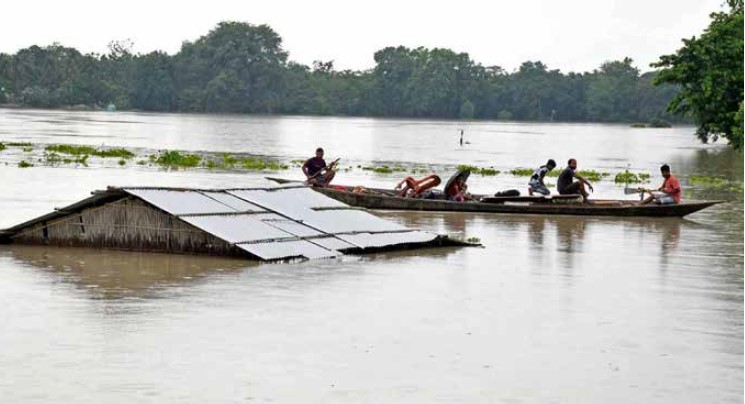Eddie L. Ralte is a seasoned disaster management professional and a Cyber and Strategic Risk Consultant at Deloitte, specializing in resilience and risk mitigation strategies. With extensive fieldwork experience and a track record of successful research, he has significantly contributed to enhancing disaster preparedness and response frameworks.
This article contains an in-depth examination of the persistent flooding challenges faced by Assam, India, and the adaptive strategies employed by local communities in response to these disasters. It highlights the geographical and climatic factors contributing to frequent floods, the inadequacies of existing flood management infrastructure, and the impacts on agriculture and livelihoods. Additionally, it discusses the resilience of communities, including the construction of stilt houses and the use of flood-resistant crops, as well as the crucial role of traditional knowledge and women in recovery efforts. The article emphasizes the need for comprehensive solutions, including infrastructure improvements, wetland restoration, and the promotion of climate-resilient agriculture, to enhance Assam’s resilience to future floods.
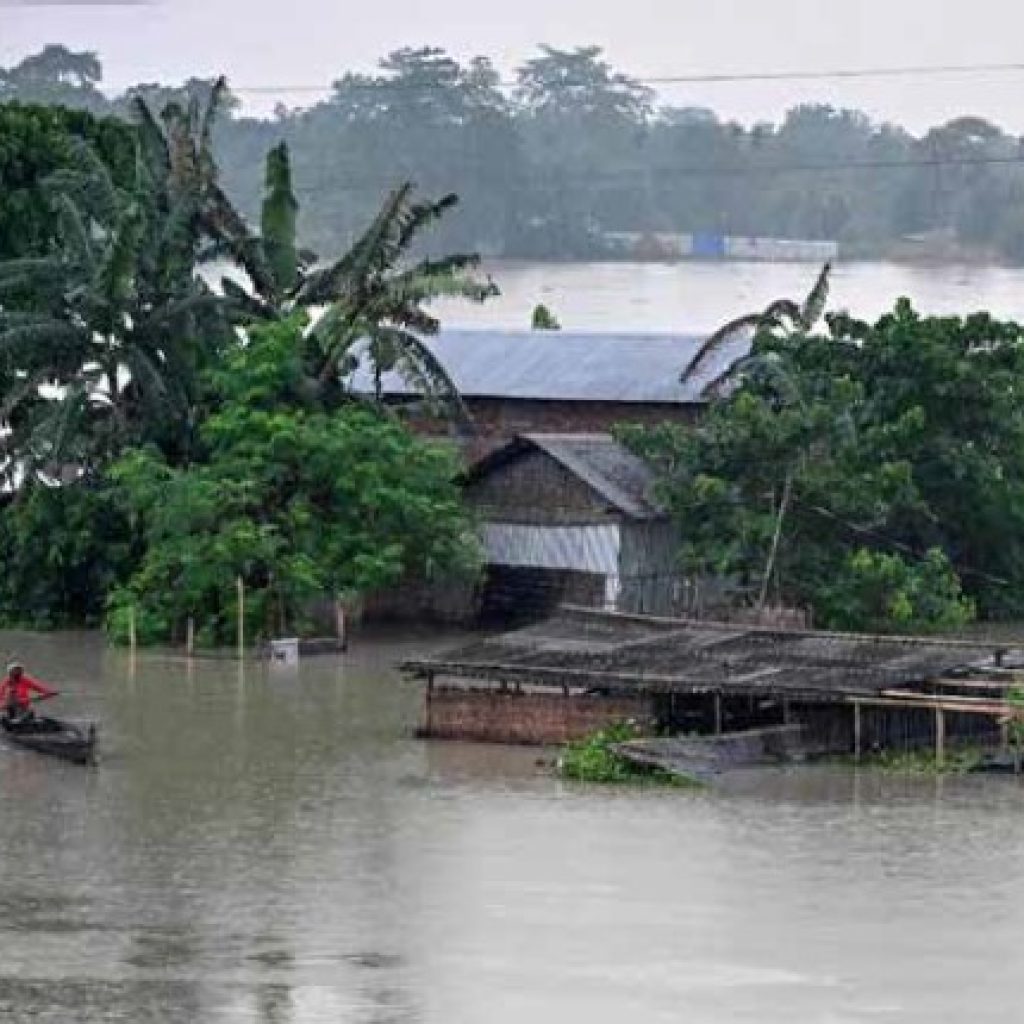
Assam, located in the northeastern region of India, is no stranger to devastating floods. With its rich biodiversity and rivers like the Brahmaputra flowing through, the state faces recurrent flooding, especially during the monsoon season. Every year, these floods wreak havoc on the lives and livelihoods of millions of people, affecting agriculture, infrastructure, and ecosystems.
The Challenges: Why Assam Faces Regular Flooding
Assam’s geography and climatic conditions make it prone to seasonal floods. The Brahmaputra River, one of the largest rivers in the world, carries a massive amount of water and sediment, often resulting in riverbank erosion and flash floods. Additionally, deforestation in the hills and catchment areas, improper drainage systems, and siltation of rivers have further exacerbated the situation. Climate change has also played a role, intensifying rainfall patterns and causing extreme weather events that increase flood frequency.
Another major concern is Assam’s aging and insufficient flood management infrastructure. Embankments, which are meant to protect against rising water levels, often breach due to poor maintenance, further aggravating the situation. Many flood-prone areas lack effective early warning systems and resilient infrastructure to cope with recurrent disasters.
Community Adaptation: The Resilience of Assam’s People
Despite the regularity of floods, the local communities in Assam have developed a range of adaptive strategies to survive these recurring disasters. For generations, residents have built stilt houses, known as chang ghar, to stay above rising water levels. Additionally, in rural areas, many have learned to diversify their agricultural practices by adopting flood-resistant crops, ensuring that their livelihoods are not entirely dependent on flood-vulnerable land.
Another important community response comes in the form of traditional knowledge-sharing systems. Villages often work together to prepare for floods, raising livestock and storing essential food supplies in elevated areas. Local leaders and grassroots organizations play a critical role in ensuring swift evacuations, setting up community shelters, and coordinating relief efforts.

The role of women in flood management and recovery is also notable. Often, women are the primary caregivers and play a crucial part in food management, healthcare, and safeguarding resources during floods. Women-led self-help groups (SHGs) in flood-affected areas have been instrumental in rebuilding efforts, providing microfinance support and emotional resilience to affected families.
Assam’s long history of flooding has shaped the lives and livelihoods of its communities, compelling them to develop a range of adaptive strategies. Despite living with these natural disasters for centuries, the recent shifts in flood patterns—marked by increased intensity and unpredictability—have challenged traditional methods of adaptation.
Local communities have historically relied on the construction of embankments to safeguard their homes and agricultural land. However, these structures have proven insufficient against the increasingly severe and sudden floods, particularly those caused by cloudbursts and extreme rainfall upstream. As a result, many residents are now more vulnerable, grappling with a sense of false security that embankments can provide complete protection.
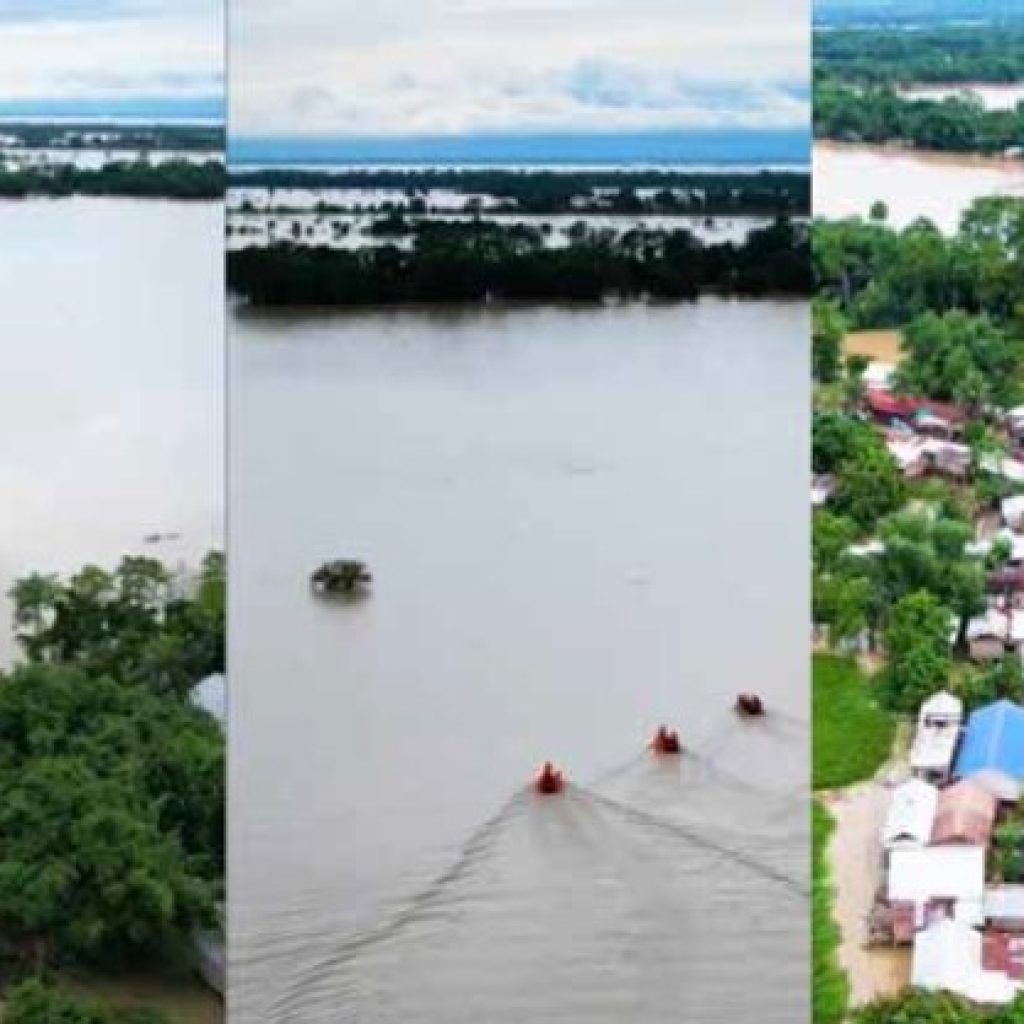
In response to the changing nature of flooding, communities have begun to innovate their approaches. Farmers are adapting their planting schedules, shifting to flood-resistant crops or varieties that can withstand short-term inundation. Additionally, there is a growing emphasis on traditional knowledge systems that inform land-use practices, helping to mitigate the impacts of floods.
Relief and recovery strategies have also evolved, with many families establishing local networks for sharing resources and information during flooding events. These networks facilitate timely responses and aid distribution, enhancing resilience in the face of adversity.
However, as flooding frequency increases and new areas become affected, the need for comprehensive reassessment of flood management strategies is evident. There is a pressing need for integrating climate resilience into community planning, which includes improving the design and materials of embankments and investing in sustainable land-use practices.
Local communities’ adaptability is crucial, yet it must be bolstered by external support and effective policy measures. Enhancing awareness about the limitations of existing infrastructure and promoting a culture of preparedness are essential steps in ensuring the safety and livelihoods of those living in flood-prone areas of Assam.
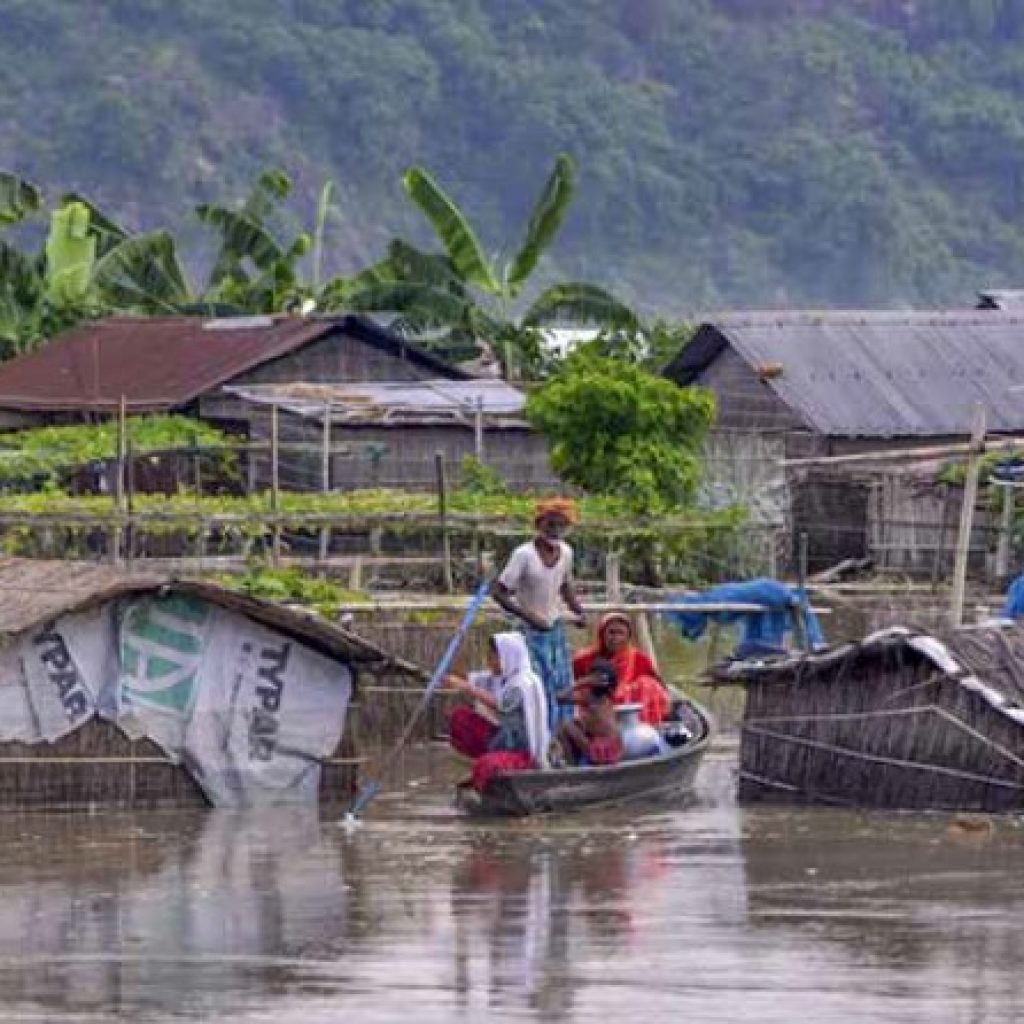
Government and NGO Interventions: What Has Been Done?
Both the Assam government and various non-governmental organizations (NGOs) have launched multiple interventions to address the flood crisis. The National Disaster Management Authority (NDMA) and Assam State Disaster Management Authority (ASDMA) work together to implement flood management plans, including embankment construction, river dredging, and flood forecasting systems.
NGOs such as ActionAid India and Save the Children have been active in conducting flood relief operations, distributing emergency supplies, and promoting disaster preparedness. They have also partnered with local communities to enhance flood-resilient farming practices, build stronger community shelters, and improve access to safe drinking water during floods.
However, challenges remain. Delays in relief distribution, insufficient funding for flood mitigation infrastructure, and gaps in policy implementation continue to leave many vulnerable communities at risk.
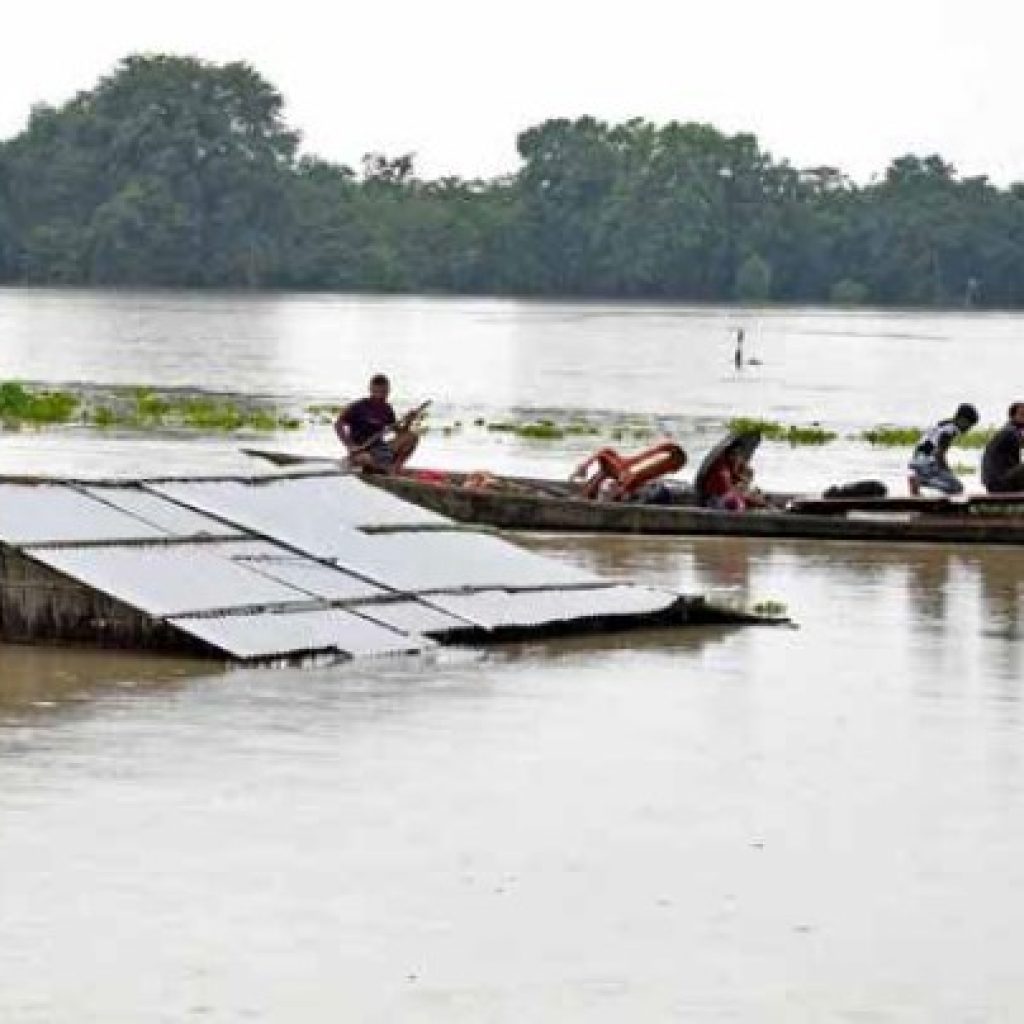
The Magnitude of
Flooding: A Persistent Challenge
The flood problem in Assam is unlike that of any other state in India, both in terms of the scale and duration of inundation and the severity of erosion. More than 50 tributaries feed the Brahmaputra and Barak rivers, making the region susceptible to frequent floods during the monsoon season. Floods affect an average of 9.31 lakh hectares annually, causing widespread damage to agriculture, property, and infrastructure. The floods of 1998 and 2004 stand out as particularly disastrous, with losses reaching Rs. 500 crores and Rs. 771 crores, respectively.
Moreover, flash floods, triggered by cloudbursts in neighbouring states like Arunachal Pradesh and Meghalaya, often compound the situation. These sudden, high-magnitude floods have wreaked havoc on large areas, sweeping away homes and claiming lives. For example, the flash floods of 2011, caused by a cloudburst in Arunachal Pradesh, led to extensive damage as the rivers Gainadi and Jiadhal overflowed.
The Challenge of
Riverbank Erosion
Alongside flooding, riverbank erosion has emerged as a significant threat in Assam. The Brahmaputra and Barak rivers, along with their tributaries, have eroded more than 4.27 lakh hectares of land since 1950, which accounts for over 7% of the state’s total land area. The river Brahmaputra has expanded to alarming widths, reaching up to 15 kilometers in some locations. This relentless erosion is not only eating away at Assam’s fertile land but also displacing entire villages, thereby disrupting rural economies and livelihoods.
In 2004, more than 20,000 hectares of land were eroded, affecting over 62,000 families. This annual loss of land, which averages around 8,000 hectares, has far-reaching consequences on agriculture, the mainstay of Assam’s economy. With fertile agricultural land being washed away, rural livelihoods are under constant threat, further compounding the state’s economic vulnerability.
What More Can Be Done? The Path Forward
The ongoing struggle against floods and erosion in Assam requires more comprehensive, long-term solutions. Strengthening the state’s flood management infrastructure is imperative. Embankments need to be upgraded and maintained regularly to withstand heavy floods. In addition, the restoration of Assam’s wetlands, which act as natural flood buffers, can mitigate flood damage by absorbing excess water during monsoons.
An improvement in early warning systems and better communication channels is also essential to ensure timely evacuation and minimize losses. Flood prediction technology needs to be integrated with community-level response mechanisms to provide real-time information to the most vulnerable populations.
In terms of long-term resilience, more attention must be given to the economic impact of floods on agriculture. Introducing climate-resilient agricultural practices and providing farmers with subsidies for flood-resistant crops will safeguard livelihoods. Moreover, local communities need more support to implement sustainable land management practices to combat erosion, including afforestation and controlled land-use strategies.
Assam’s flood and erosion problems are not merely natural disasters; they are a combination of environmental and human-induced factors. The resilience of Assam’s people is a source of inspiration, but without adequate support, their efforts alone will not suffice. A comprehensive, well-coordinated strategy that combines traditional knowledge with modern science and infrastructure development is the need of the hour.
Assam’s future depends on how well it can adapt to its changing environmental landscape. With the right interventions and a focus on sustainable development, it can reduce the devastating impacts of floods and erosion, ensuring a more secure and resilient future for its people.
The Way Forward:
Building a More Resilient Assam
As Assam navigates the ongoing challenges posed by floods, it stands at a crucial crossroads where innovative and sustainable strategies can shape its future. Despite notable advancements in flood management and community adaptation, the state faces a pressing need for scalable solutions that address both immediate concerns and long-term resilience. By focusing on infrastructure improvements, restoring natural ecosystems, enhancing early warning systems, promoting climate-resilient agriculture, and empowering local communities, Assam can forge a path toward greater resilience.
Improving Infrastructure
One of the foundational pillars for a more resilient Assam lies in the urgent need to upgrade its infrastructure. The state’s embankments, which have historically served as vital barriers against floodwaters, require significant attention and investment. Regular maintenance and strengthening of these embankments are paramount to minimize the damage caused by flood events. Moreover, the construction of stronger flood-resistant infrastructure—such as elevated roads and designated flood shelters—will not only reduce vulnerability during extreme weather but also ensure better access to relief and emergency services. By integrating innovative designs and materials, Assam can create a network of infrastructure that stands resilient against the onslaught of nature, allowing communities to thrive even in the face of adversity.
Restoring Wetlands
Wetlands, often dubbed nature’s flood buffers, play a critical role in mitigating flood risks. These ecosystems act as natural sponges, absorbing excess water during periods of heavy rainfall and slowly releasing it, thereby reducing the volume and speed of floodwaters. Unfortunately, Assam’s wetlands are rapidly disappearing, primarily due to urbanization and unsustainable agricultural practices. Initiatives aimed at restoring these vital ecosystems can significantly enhance the state’s flood resilience. By prioritizing wetland conservation and restoration, Assam can leverage its natural assets to combat flooding, while simultaneously benefiting biodiversity and improving local water quality. Moreover, engaging local communities in these restoration efforts can foster a sense of stewardship and enhance awareness of the ecological significance of wetlands.
Strengthening Early Warning Systems
In the age of technology, leveraging modern tools for real-time flood prediction and early warnings has become a necessity. Assam’s flood-prone regions can benefit greatly from enhanced early warning systems that utilize satellite imagery, weather forecasting, and data analytics to predict impending flood events. These systems must be complemented by effective communication channels to ensure timely alerts reach vulnerable communities. Establishing partnerships with local radio stations, community organizations, and social media platforms can enhance the dissemination of information, enabling faster evacuations and ultimately saving lives. By investing in these technological advancements, Assam can create a proactive approach to flood management, where communities are better prepared and informed about potential threats.
Promoting Climate-
Resilient Agriculture
Agriculture is a cornerstone of Assam’s economy and livelihood, yet it remains highly susceptible to the impacts of flooding. To safeguard the agricultural sector, promoting climate-resilient practices is essential. The adoption of flood-resistant crop varieties and sustainable farming techniques can provide farmers with the tools they need to adapt to changing climatic conditions. Furthermore, government initiatives that offer subsidies and training programs for farmers can facilitate the transition to these resilient practices. By equipping farmers with knowledge and resources, Assam can bolster its agricultural productivity while reducing vulnerability to flood-related disruptions. This not only protects livelihoods but also contributes to the overall food security of the region.
Empowering Local
Communities
Ultimately, the strength of Assam’s resilience lies within its communities. Empowering local populations to take an active role in flood preparedness and response is crucial for minimizing flood-related losses. Grassroots-level initiatives that engage communities through regular drills, awareness programs, and access to resources can foster a culture of preparedness and resilience. Community-led efforts can harness traditional knowledge and practices while integrating modern techniques, creating a unique blend of approaches tailored to local contexts. Moreover, encouraging collaboration among community members, local governments, and NGOs can amplify the impact of these initiatives, ensuring a unified response to flood challenges. In conclusion, while Assam faces daunting challenges posed by floods, the resilience of its people provides a foundation for hope. By combining traditional knowledge with modern flood management strategies, the state can emerge stronger and better equipped to face future flood events. Through focused investments in infrastructure, the restoration of natural ecosystems, technological advancements in early warning systems, the promotion of climate-resilient agriculture, and the empowerment of local communities, Assam can pave the way for a sustainable and resilient future. The journey may be complex, but with collective efforts, the vision of a more resilient Assam is within reach.


